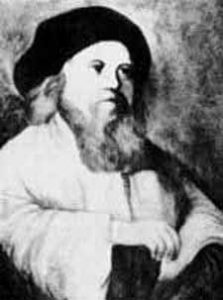The Baal Shem Tov was an 18th-century Jewish mystic who founded the Hasidic movement within Judaism, which is the way of goodness.
His arrival in history at a time when the Jewish people were at their worst. Numerous pogroms had occurred, there were many conversions to Christianity, and a rift was growing between religious scholars and the lower classes. Askhenase Jews were on the verge of losing their identity.
The Baal Shem Tov was a great religious scholar, but he was also a man of the people, who had worked in a number of professions and took great joy in sharing his faith with the masses in all circumstances, such as at the end of markets. In his view, the treasures of the Torah should not remain in places of study, but take their place at the heart of everyday life. Purity and simplicity of heart are as important as the study of religious texts. He encourages and develops singing as a means of expressing joy. He introduced ritual bathing for all. But he drew the suspicion of neighboring religious authorities who considered his practices as unorthodox.
However, his erudition, foresight, kindness, patience, joy and miracles won over his opponents. He prepared many disciples to spread his teachings, taking care to preserve the unity of the Jewish people.
Since then, many wise men, even in the Sephardic world, have perpetuated and developed this path of wisdom.
This man succeeded in altering the theoretical rigor then prevalent in his religion. He made people accept that the Eternal could manifest Himself in ways
other than those previously accepted. This evolution produced exceptional fruits for the Jewish people.
New writings facilitating inner transformation were accepted, such as the Tanya and the works of Rabbi Nahman of Breslev were recognized as a complement of the Torah.
 arrow_drop_down
arrow_drop_down 